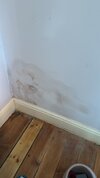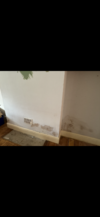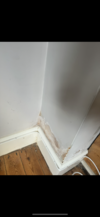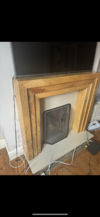Hi All
I’m looking for some advice, we have just bought a semi detached 1940s house and we have 2 chimney breasts in the living/dining area (adjoining wall) that have damp patches.
The previous owners had a damp course in 2012 across the whole wall but the guarantee is void due to only have a photocopy and the company now ceased.
We did have a HB survey which mentioned that it could be down to the 2 chimney pots that are open, there is also a lot of moss growing on the chimney. The worst damp patch pictured is on the back breast that has been closed up but has a vent fitted at the bottom. It has also spread to the alcove wall.
Could open pots be the cause of this or could there be a bigger issue?

I’m looking for some advice, we have just bought a semi detached 1940s house and we have 2 chimney breasts in the living/dining area (adjoining wall) that have damp patches.
The previous owners had a damp course in 2012 across the whole wall but the guarantee is void due to only have a photocopy and the company now ceased.
We did have a HB survey which mentioned that it could be down to the 2 chimney pots that are open, there is also a lot of moss growing on the chimney. The worst damp patch pictured is on the back breast that has been closed up but has a vent fitted at the bottom. It has also spread to the alcove wall.
Could open pots be the cause of this or could there be a bigger issue?





